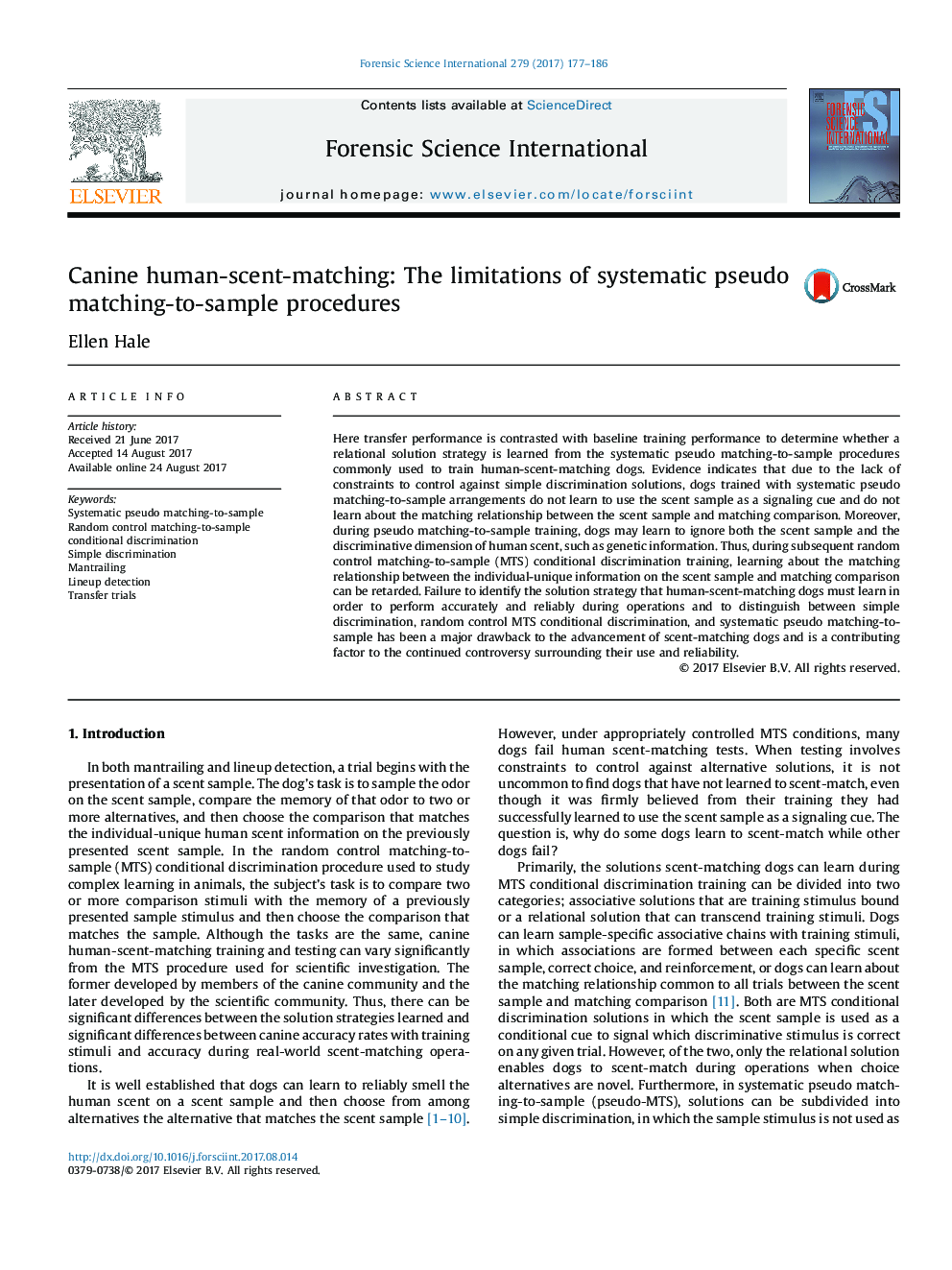| Article ID | Journal | Published Year | Pages | File Type |
|---|---|---|---|---|
| 6462109 | Forensic Science International | 2017 | 10 Pages |
Here transfer performance is contrasted with baseline training performance to determine whether a relational solution strategy is learned from the systematic pseudo matching-to-sample procedures commonly used to train human-scent-matching dogs. Evidence indicates that due to the lack of constraints to control against simple discrimination solutions, dogs trained with systematic pseudo matching-to-sample arrangements do not learn to use the scent sample as a signaling cue and do not learn about the matching relationship between the scent sample and matching comparison. Moreover, during pseudo matching-to-sample training, dogs may learn to ignore both the scent sample and the discriminative dimension of human scent, such as genetic information. Thus, during subsequent random control matching-to-sample (MTS) conditional discrimination training, learning about the matching relationship between the individual-unique information on the scent sample and matching comparison can be retarded. Failure to identify the solution strategy that human-scent-matching dogs must learn in order to perform accurately and reliably during operations and to distinguish between simple discrimination, random control MTS conditional discrimination, and systematic pseudo matching-to-sample has been a major drawback to the advancement of scent-matching dogs and is a contributing factor to the continued controversy surrounding their use and reliability.
